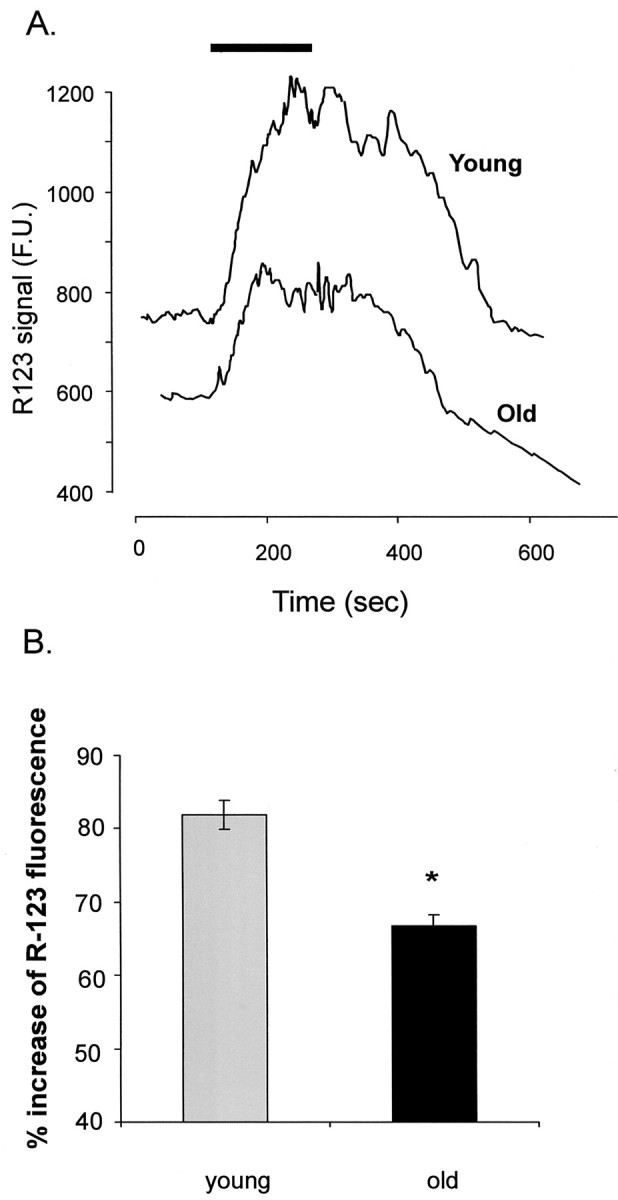Fig. 9.

Carbonylcyanidep-(trifluoromethoxy)phenylhydrazone (FCCP)-induced release of rhodamine-123 from loaded slices.A, Traces of FCCP (1 μm)-induced release of rhodamine-123 (R123) from slices obtained from young and old animals. Each trace represents the average of raw rhodamine fluorescence signals from one individual experiment (13 cells for the young and 11 cells for the old) evoked by FCCP during the exposure time indicated by the solid bar above the traces.B, Bar graph (mean ± SEM from 7 images from 3 separate animals for each age group) of the FCCP effect on the rhodamine-123 (R-123) signal. In the old slices, the protonophore induces a significantly (*p < 0.001) lower increase in the rhodamine-123 signal, indicating lower rhodamine-123 loading.
